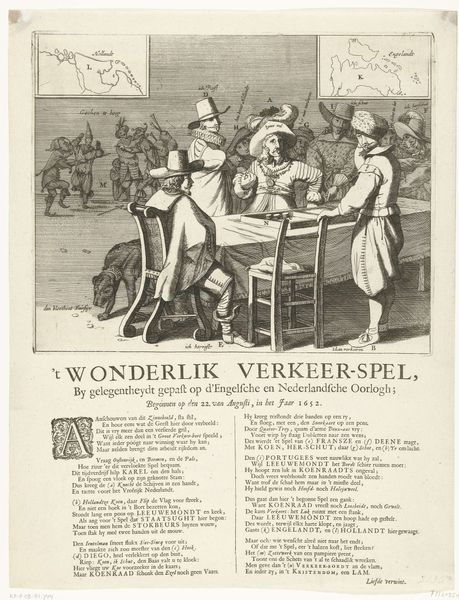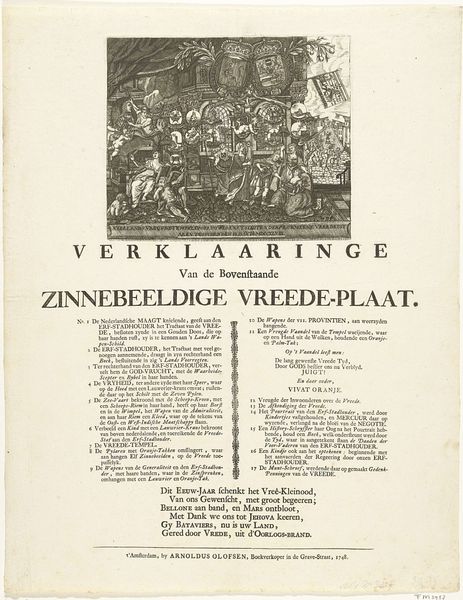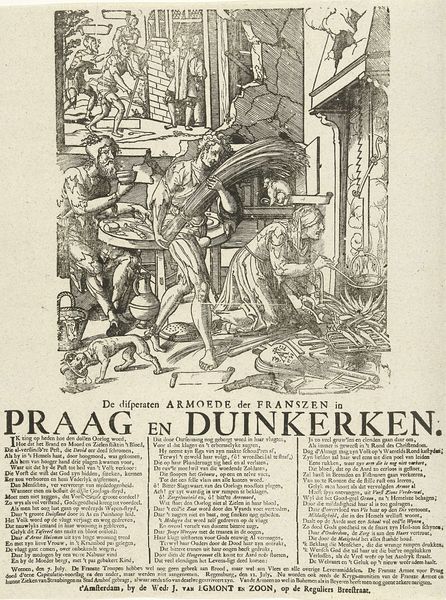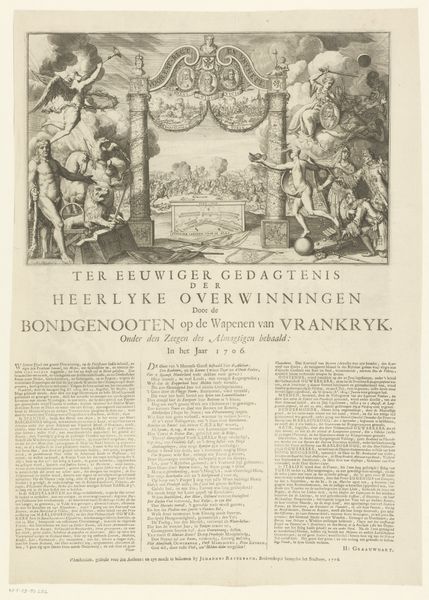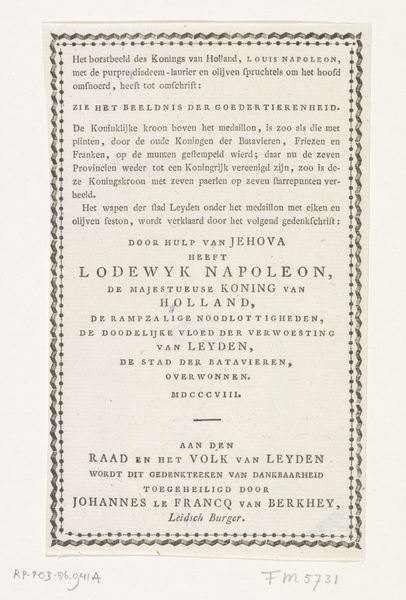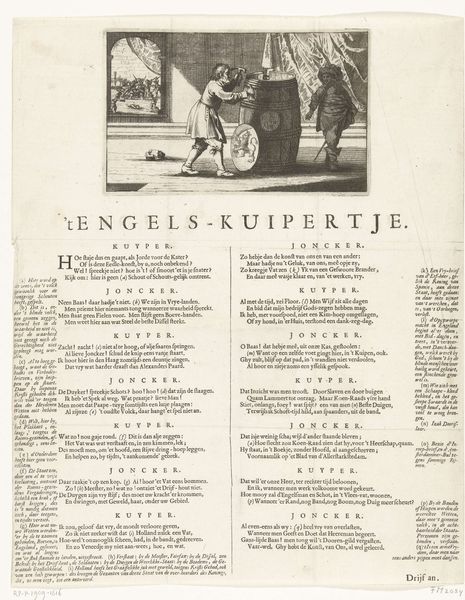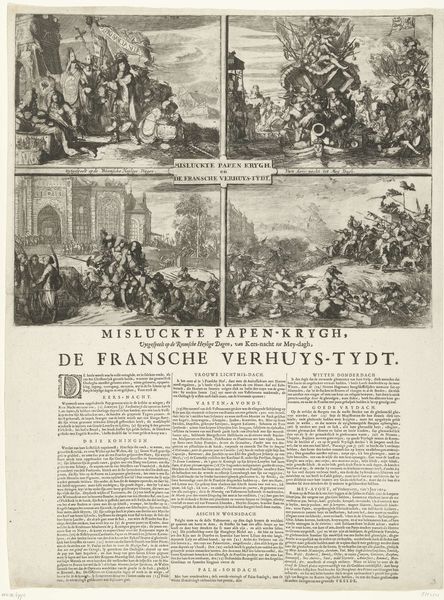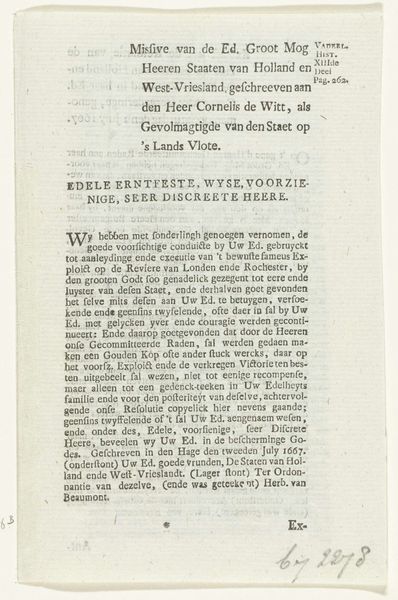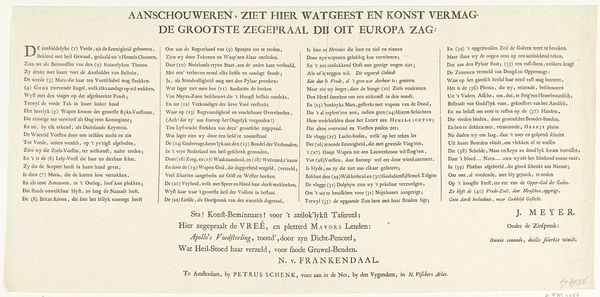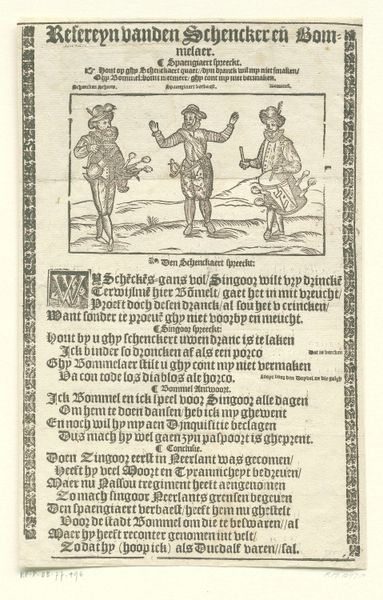
Allegorie op de Oostenrijkse successieoorlog, ca. 1742 1540 - 1742
0:00
0:00
print, engraving
#
allegory
#
baroque
# print
#
history-painting
#
engraving
Dimensions: height 495 mm, width 366 mm
Copyright: Rijks Museum: Open Domain
Curator: This engraving, *Allegory on the Austrian War of Succession*, created around 1742 by Cornelis Anthonisz, uses potent symbolism. It reminds me of the power dynamics inherent in representing historical conflicts. Editor: Yes, I noticed the figures seem to embody abstract concepts like justice and virtue. The amount of detail packed into this black-and-white print is astonishing. What do you see in this piece beyond just a historical record? Curator: I see a reflection of the dominant ideologies of the time, carefully constructed and disseminated through visual culture. Note how the artist uses allegory to legitimize particular political positions related to the Austrian War of Succession. How does this use of symbolism strike you? Do you feel the figures are impartial or biased? Editor: I see your point. They're definitely making an argument. The figure with the scales seems to represent justice, but is that justice for everyone or only for specific allies in the war? Curator: Exactly. Consider the dog, often a symbol of loyalty, placed beside one of the figures. It subtly directs the viewer toward a specific interpretation of fidelity. The question then becomes, whose fidelity are we talking about? The artist clearly positions us within a specific network of power. Do you think contemporary audiences were aware of how the prints mediated those ideologies? Editor: That’s a great question. I suspect that the poem text at the bottom, even for those who were literate, helped direct people toward the "right" interpretation. Curator: Precisely! And remember that the work's placement in the public sphere helped normalize those viewpoints. Thinking about prints like these encourages us to question how images shape our own perceptions of conflict and power. Editor: It's been helpful to reconsider the engraving through the lens of social context and how ideologies are constructed. I’ll never look at historical artworks the same way! Curator: Agreed, by critically examining these visual narratives, we are better equipped to engage with the complex realities of the past and the present.
Comments
No comments
Be the first to comment and join the conversation on the ultimate creative platform.
